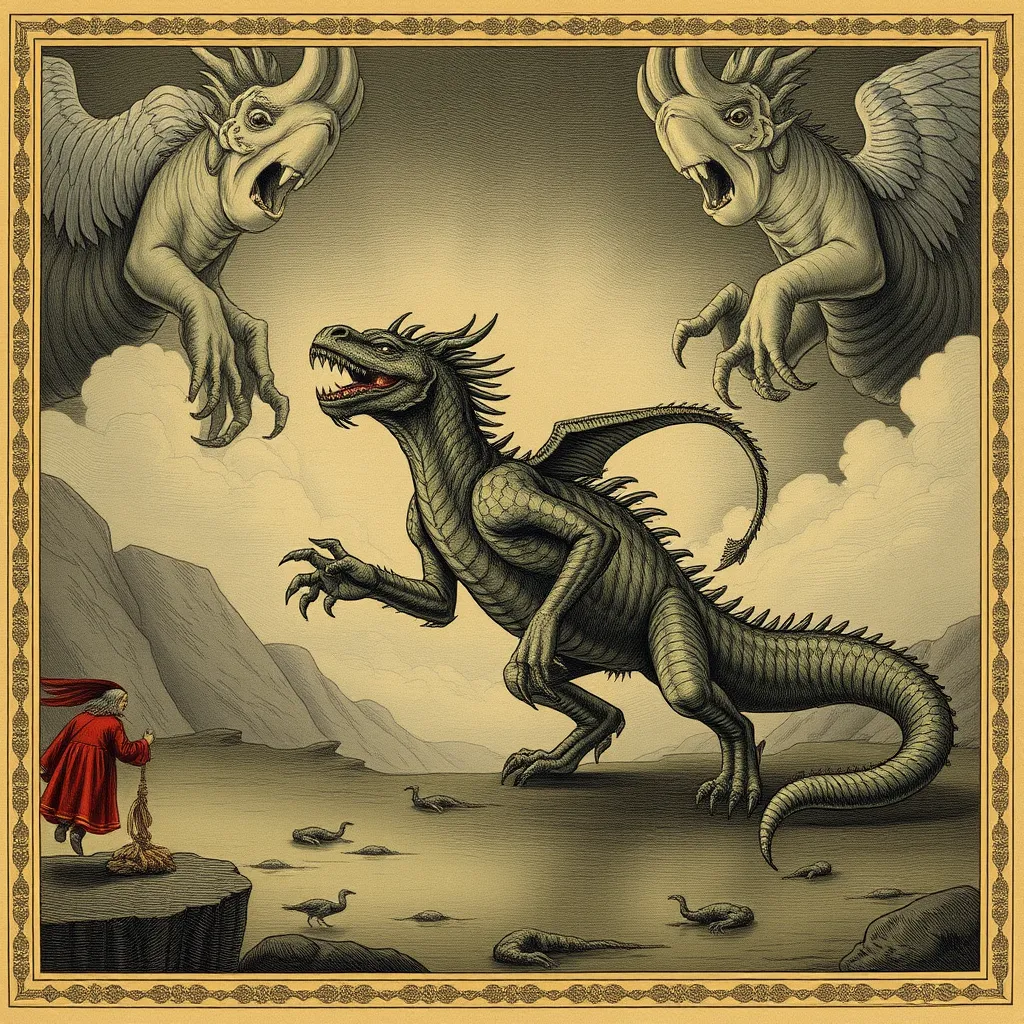The Guardians of the Dead: Exploring the Lore of the Aztec Xolotl
I. Introduction
Aztec mythology is a rich tapestry of gods, legends, and creation stories that shaped the worldview of one of Mesoamerica’s most influential civilizations. Among these deities, Xolotl stands out as a significant figure, embodying the complexities of life, death, and transformation. Understanding Xolotl is crucial, especially in the context of death and the afterlife, as he serves as a protector and guide for souls navigating the journey beyond life.
II. The Mythological Origins of Xolotl
Xolotl’s origins are deeply intertwined with other prominent deities in Aztec mythology. He is often described as the twin brother of Quetzalcoatl, the feathered serpent god, representing the duality of existence.
- Parentage: Xolotl is the offspring of the primordial couple, Coatlicue and Mixcoatl, which connects him to both creation and the underworld.
- Duality: Xolotl embodies both fire and death, showcasing the Aztec belief in the interconnectedness of these elements.
- Creation Myths: In various creation myths, Xolotl plays a pivotal role, often depicted as a trickster who helps in the creation of humanity.
III. Xolotl’s Role in the Underworld
Central to Xolotl’s lore is his role in the Aztec underworld known as Mictlan. This realm is where souls journey after death, and Xolotl serves as their guide.
- Mictlan: A complex and layered underworld, Mictlan is described as a place where souls face various challenges before reaching their final resting place.
- Responsibilities: As a psychopomp, Xolotl is responsible for guiding the souls of the deceased, ensuring they navigate the treacherous paths of the underworld.
- Death and Rebirth: The Aztec belief system emphasizes a cyclical understanding of life, where death is not an end but a transformation and a new beginning.
IV. Symbolism and Attributes of Xolotl
Xolotl is often depicted in various forms throughout Aztec art, each representing different aspects of his character and responsibilities.
- Physical Representations: In Aztec art, Xolotl is commonly shown as a dog or a figure with canine features, signifying loyalty and protection.
- Symbolic Meanings: His canine form is often associated with guides for the dead, drawing parallels to the role of dogs in various cultures that accompany souls in the afterlife.
- Fire and Transformation: Xolotl’s association with fire symbolizes both destruction and renewal, reflecting the dual nature of existence.
V. Xolotl in Rituals and Ceremonies
The Aztecs honored Xolotl through various rituals and ceremonies that underscored his significance in their spiritual life.
- Rituals: Offerings were made to Xolotl to ensure a safe passage for the deceased and to invoke his protection.
- Significance of Offerings: These offerings often included food, flowers, and even animal sacrifices, highlighting the importance of appeasing the gods.
- Funerary Practices: Xolotl’s influence is evident in the elaborate funerary practices of the Aztecs, where the dead were often accompanied by items that would aid them in the afterlife.
VI. Xolotl’s Legacy in Modern Culture
In contemporary society, Xolotl’s legacy endures, manifesting in various forms of media and spiritual practices.
- Representation: Xolotl appears in modern art, literature, and film, often symbolizing themes of death, transformation, and the afterlife.
- Resurgence of Interest: There has been a growing fascination with Aztec mythology, with Xolotl as a focal point due to his unique attributes and roles.
- Modern Spiritual Practices: Some contemporary spiritual movements draw on Xolotl’s symbolism, integrating aspects of his mythology into their beliefs about life and death.
VII. Comparative Analysis with Other Mythological Figures
Xolotl’s character can be compared with other mythological figures that embody similar themes of death and the afterlife across cultures.
- Xolotl vs. Anubis: Like Anubis in Egyptian mythology, Xolotl serves as a guide for souls, highlighting a universal theme of psychopomps across cultures.
- Similarities with Hades: Hades, the Greek god of the underworld, shares commonalities with Xolotl, particularly in their roles related to death and the afterlife.
- Unique Aspects: However, Xolotl’s association with fire and transformation sets him apart, representing a more dynamic relationship with death than is often seen in other mythologies.
VIII. Conclusion
Xolotl occupies a significant place in Aztec culture, embodying the complexities of death, the afterlife, and transformation. His dual nature as both a protector of the dead and a god of fire illustrates the intricate beliefs of the Aztecs regarding existence. The ongoing relevance of Xolotl’s lore provides valuable insights into the ancient understanding of life and death, resonating with contemporary discussions surrounding these themes. Ultimately, Xolotl’s legacy continues to impact modern society, serving as a reminder of the rich tapestry of mythology that informs our understanding of the human experience.




